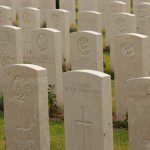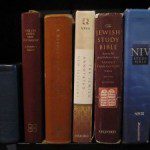Today’s text includes a good bit of carry-over from the war chapters, while adding political intrigue and plots.
First, note my old post at Times&Seasons
Rough outline
Helaman 1- Pahoran1 dies. Election and assassination of Pahoran2 by his brother. Lamanite army, led by Coriantumr attacks capital, Zarahemla, takes it. Moronihah black holes the Lamanite army.
Helaman 2 – Helaman2 becomes chief judge. We meet Gadianton, leader of Kishkumen’s band. Attempted assassination of Helaman2, Gadiantons flee.
Helaman 3– Peace for three years, then distensions, and many go north. Cement, many records, but only 1/100th written. Wars until end of 48th than peace, except for Gadiantons. Peace and prosperity until 51st and then pride. Helaman2 dies.
Helaman 4– Church contention and bloodshed. Nephite dissenters stir up Lamanites, take ALL of southern Nephite holdings, because of Nephite wickedness. Begin to repent and Moronihah regains half. He, Lehi, and Nephi preach. Nephites are weak like Lamanites, “judgements of God did stare them in the face,” they begin to remember prophecies of Alma and Mosiah.
Helaman 5– Nephi gives up judgement seat to preach. Words of Helaman to Nephi and Lehi. They preach from city to city with great power. Cast into prison, but on execution day, surrounded by fire, and convert their captors. Ends in 62nd year.
Hel 1:8 Death penalty (for Kishkumen), but not as deterrent.
Hel 1:14-15 Again, the standard “good Nephites vs. bad Lamanites” false binary is subverted by the text itself. This “Nephite vs Lamanite” is really “Nephite vs. dissenter Nephite.” It’s Coriantumr, a Nephite dissenter, who brings down the Lamanites in war against the Nephites. How is this accomplished? By “stirring up to anger” (1:17). Anger and outrage are a common political tool, today as much as anciently, it seems. If you don’t want to be manipulated, then the key is to examine the claims being brought forward, and avoid knee-jerk anger. Some grievances are legitimate and unjust, but the answers are often complex and involve compromise. We cannot ourselves be easily manipulated into unwise courses of action by demagogues.
Hel 1:24 Again, no standing army. Must be gathered from among the people.
Hel 1:27 What does “most capital” mean, as an adjective? Most important? “2. Figuratively, as the head is the highest part of a man, chief; principal; first in importance; as a capital city or town; the capital articles of religion.”
Hel 2:4 Introduced to Gadianton, the eponymous founder of the Gadianton Robbers™.
Hel 2:6-9 Helaman has… interesting servants. Kishkumen and the servant apparently didn’t recognize each other by sight, perhaps an indication that they wore masks in their meetings, cf v. 6, when Helman’s servant was among them “in disguise”. Does v. 8 imply that Helaman’s servant was joining, and when he learned of the whole thing, he was appalled and left?
Hel 2:12-14 Mormon gives a teaser. “more of this Gadianton shall be spoken hereafter….And behold, in the end of this book ye shall see that this Gadianton did prove the overthrow, yea, almost the entire destruction of the people of Nephi…. I do not mean the end of the book of Helaman, but I mean the end of the book of Nephi, from which I have taken all the account which I have written.” This also shows that Mormon is not writing as he goes. Rather, he’s read through the records thoroughly, and he
Hel 3:13, 15.Lots of records which are very large. Stones. Diego de Landa and the Codices. 4. Plus hidden ones.
Hel 3:16 Mormon editorializes about his day, consciously “returning to [his] account” in v. 17.
Hel 3:23 Peace, except in secret combinations.
Hel 3:33 Peace also, except for pride.
Hel 4:2 Mormon summarizes another war. Dissenters go to Lamanites, try to stir them up. Lamanites are scared, but eventually give in.
4:12-13 The reason for all this happening. Moronihah preaches to them, and they begin to repent.
Hel 4:21 How far back were Alma and Mosiah? About 60 years, since Mosiah2 was the one who instituted the judges.
Hel 4:25 “Perish unless they cleave unto God.” Contranyms or auto-antonyms are words with two meanings, opposite to each other. “Cleave” is one of these, meaning either “to stick close” (Gen 2:24. Deu 4:4, 10:20, 28:21, Joshua 22:5) or “to separate, split” (Lev 1:17, Deu 14:6) like a “meat cleaver” or “cloven hoof.” Note how several of the Old Testament passages speak of “cleaving” to God.
Hel 5:2-3 Cf. Mosiah 29:27; D&C 88:35
Hel 5:5-13
“Given the comprehensive chronological framework of the Book of Mormon, it is always interesting when Mormon presents things out of sequence. For instance, at Helaman 5:5– 13, Mormon quotes a speech by Helaman3 not at the time it was originally given but instead by having his two sons remember it many years later (perhaps not coincidentally, the subject of that discourse was remembrance).”- Hardy, Reader’s Guide to the Book of Mormon, 103.
Hel 5:12 Christ should be the center and foundation of our personal convictions and testimony. Human leaders, whether current, past, or scriptural, should be secondary or tertiary.
“Do not, brethren, put your trust in man though he be a Bishop, an Apostle or a President; if you do, they will fail you at some time or place; they will do wrong or seem to, and your support be gone; but if we lean on God, He never will fail us. When men and women depend on God alone and trust in Him alone, their faith will not be shaken if the highest in the Church should step aside. … Perhaps it is His own design that faults and weaknesses should appear in high places in order that His Saints may learn to trust in Him and not in any man or woman.” President George Q. Cannon, Millennial Star 53:658-659, 673-675.
LDS historian Davis Bitton gave a great talk on this at FAIR some years back, which was then published by the Maxwell Institute. He called it, “Why I Don’t Have a Testimony of the History of the Church.” Worth a read.
Hel. 5:23-24
And it came to pass that Nephi and Lehi were encircled about as if by fire, even insomuch that they durst not lay their hands upon them for fear lest they should be burned. Nevertheless, Nephi and Lehi were not burned; and they were as standing in the midst of fire and were not burned. And when they saw that they were encircled about with a pillar of fire, and that it burned them not, their hearts did take courage.
There are several first vision accounts. in the 1832 account (which post-dates the translation of the Book of Mormon), Joseph writes that he saw a “pillar of fire,” which he crosses out and writes “light.” I recall reading (Bushman? someone else?) writing that Joseph seemed surprised the trees don’t catch fire.
C.f. Acts 2:2-3 “And suddenly from heaven there came a sound like the rush of a violent wind, and it filled the entire house where they were sitting.
3 Divided tongues, as of fire, appeared among them, and a tongue rested on each of them.” Luke 24:32. cf. Hel 5:45 “the Holy Spirit of God did come down from heaven, and did enter into their hearts, and they were filled as if with fire”
What makes fire such a good or fitting metaphor?
Then in v. 28, a cloud of darkness. An actual cloud?
5:50 and signs. Matt 16:4. Are signs for those who believe or don’t? Should we seek signs? Jdg. 6, D&C 129. What kind? Signs confirm, but don’t establish?
As always, you can help me pay my tuition here, or you can support my work through making your regular Amazon purchases through this Amazon link. You can also get updates by email whenever a post goes up (subscription box on the right). If you friend me on Facebook, please drop me a note telling me you’re a reader. I tend not to accept friend requests from people I’m not acquainted with.











